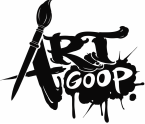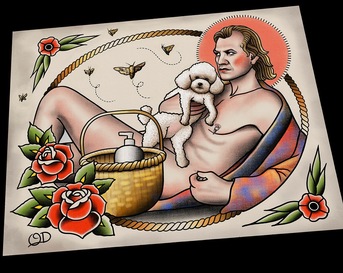|
1. Who were your teachers or influences? My art teachers are other works of art and artists that inspire me. It could be a medieval painting or a vintage photograph that teaches me what aesthetics are most pleasing to use in my own work. I glean my environment for influence and inspiration. 2. What technique did you find most useful when learning to paint? Digital art. This technique is useful in the fact that you can just worry about learning how to paint and not waste energy on anything else like set up/clean up, erasing hard-to-erase reworked portions, dipping/ cleaning your brush, dispensing and mixing media, etc. 3. What are 3 key principles of making good art, in your opinion? 1. A visually appealing and consistent aesthetic 2. Something that provokes emotion 3. A good use of cleverness 4. What are the most common mistakes that you see other artists make? Not using highlights and shadows to create something with more depth (with the exception of certain illustrative styles). 5. If you were to train someone to paint like you in 1 week, what would their training look like? Vigorous because 1 week is surely not enough time. If they only have a little art experience then they will need to learn the basic foundation of drawing and painting. From there, we will study the aesthetics of tattoo art and then, lastly, study my own personal aesthetics to narrow it down. It's be an intense week lol 6. Can you break your painting process down into 10 steps for us? 1) brainstorm the concept. 2) look for reference photos 3) digitally mock up the concept/design 4) Using a Wacom tablet and the program ArtRage, I choose a canvas texture for my painting surface to lessen the digital feel of every piece (I love to paint digitally but love the look of natural painting) 5) i used several different tools to mimic natural brushes and paint: Marker/pen, airbrush, Charcoal, Pencil 6) I use my digital mock up as a template and refer to it often and other photos for detail reference 7) Like most digital painters, I paint in different layers for different colors which is then merged in the end 8) I sometimes use a Watercolor brush tool to put a vintage wash on the finished illustration 9) I import the file into photoshop where it is color corrected 10) The piece is printed on an inkjet printer and made into a giclee
0 Comments
Leave a Reply. |
Art GoopArt Goop is a Q&A for artists by artists. We ask questions designed to examine the techniques and methods of some of the most inspiring artists working today. Categories
All
Archives
September 2017
|


 RSS Feed
RSS Feed